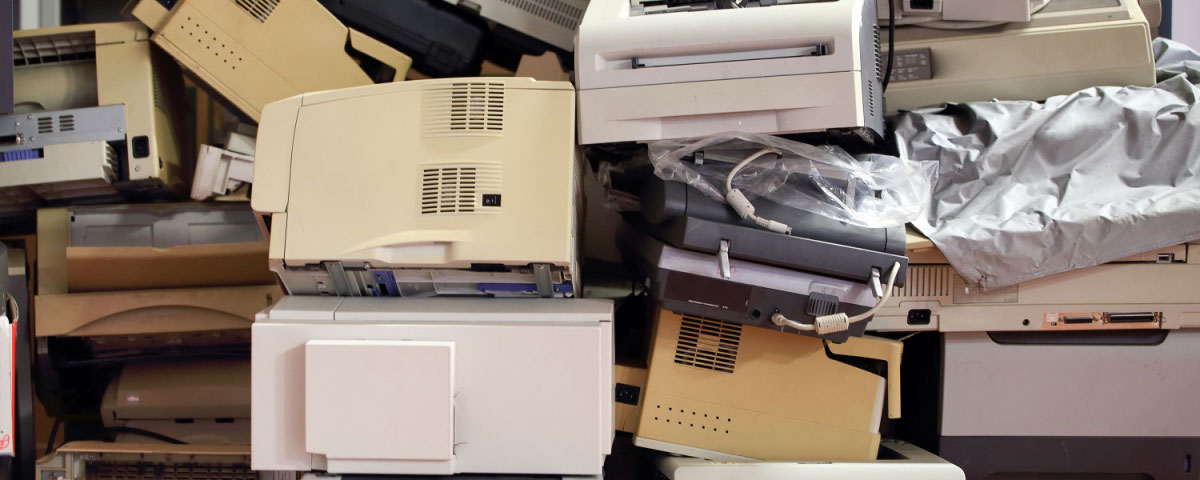Legacy Print Technology: The Hidden Costs You’re Overlooking
Printers are rarely the stars of any IT strategy. They are the workhorses in the background, that are reliable, overlooked, and assumed to be “just working.” However, those aging print systems are silently draining time, money, and even security integrity for many organizations.
Outdated Print Tech: The Silent Budget Sink
Legacy printers often seem like a smart investment. After all, they are paid off, they still print, and nobody is complaining yet. But beneath that perceived simplicity lies some significant inefficiencies.
Maintenance That Never Ends
The older the hardware, the more frequently it demands attention. This can be paper jams, hardware failures, or toner calibration issues, all these minor hiccups add up. IT teams are then pulled into time-wasting troubleshooting loops, and the costs of service, spare parts, and emergency repairs steadily climb.
Many legacy printers lack modern features like predictive maintenance or remote diagnostics, which means issues often go unnoticed until they cause significant disruptions. Without proactive monitoring or alerting systems, the result is a constant cycle of downtime and reactive fixes.
This approach not only impedes productivity but also places a heavy strain on IT resources, especially in high-volume print environments where quick identification and resolution of problems are critical. As a result, businesses end up spending more time and money addressing avoidable issues, rather than preventing them in the first place.
Power-Hungry and Wasteful
Modern printers are designed with sustainability in mind. Legacy ones? Not so much. Older printer devices typically lack power-saving modes, rely on energy-inefficient technologies, and easily burn through consumables. We see even more waste of time and resources due to excessive toner use, duplex printing not being the default, and job routing that cannot be optimized.
Legacy print environments also commonly lack centralized control. Without usage analytics or quota management, print behaviors go unchecked including unnecessary color jobs, abandoned prints, or reprints due to poor output quality. These inefficiencies scale quickly across departments, translating into higher energy usage, wasted paper, and inflated operating costs.
Security: A Backdoor You Can Not See
Printers have become part of the attack surface. They are network-connected endpoints that can be overlooked and left unsecured. They are the perfect entry point for attacks because they rarely include basic protections like data encryption, user authentication, or firmware updates. Some printers store jobs on local hard drives without any form of data protection, making them a serious liability in industries where compliance is non-negotiable.

This is not even limited to external threats. Without audit trails or access controls, it is impossible to track who printed what and when. Many older printers also do not support secure print release mechanisms, meaning sensitive print jobs can sit unattended in output trays, particularly problematic in hybrid or shared workspaces. This lack of accountability opens the door to internal misuse or accidental exposure of confidential documents.
For organizations in healthcare, finance, or legal services, that is not just inefficient but a regulatory nightmare.
The Hidden Costs
Beyond the visible expenses, legacy print systems introduce a range of hidden costs that gradually undermine efficiency, inflate IT workloads, and increase operational risk.
1. Implementation Delays
Modernization is not just about swapping devices. When old systems need to connect with new platforms, implementation can spiral into weeks of testing, troubleshooting, and user training. Downtime becomes the norm, not the exception.
2. Administrative Overload
Legacy environments demand constant attention with manual updates, patching, managing driver conflicts, and chasing down compatibility issues. These are hours your IT team could be spending on innovation or proactive improvements.
3. Scalability Bottlenecks
As organizations grow or adopt hybrid work models, printing infrastructure needs to flex. Legacy systems were not built for distributed teams, mobile access, or cloud printing, making every new location or employee a challenge to support.
4. Vendor and Tool Sprawl
Trying to bridge functionality gaps with third-party software or band-aid solutions often creates a mess: overlapping tools, redundant licenses, and fragmented workflows. The more vendors you juggle, the harder it is to control costs and maintain consistency.
5. Lack of Flexibility
Older systems often mean long-term contracts, proprietary hardware, and solutions that do not play well with others. If your print environment cannot evolve quickly to meet regulatory demands, scale during M&As, or integrate with your security stack, it is a liability.
What is an Alternative?
Organizations are turning to Managed Print Services (MPS) for a reason. These modern print ecosystems offer:
- Remote monitoring and automatic supply ordering
- Integrated security and compliance features
- Centralized cost tracking and analytics
- Cloud printing and mobile access support
Paired with modern IT infrastructure, these services not only reduce operational risk but also unlock new efficiencies that give organizations the ability to cut waste, improve uptime, and relieve the pressure on internal IT.
The Bottom Line
Legacy systems often die slowly and expensively. While it may seem easier to stick with familiar technology, the hidden costs of outdated print infrastructure accumulate over time, quietly draining resources and efficiency.
If your print environment has not been evaluated in recent years, now is the ideal moment to reassess and take control before these costs become too overwhelming.


